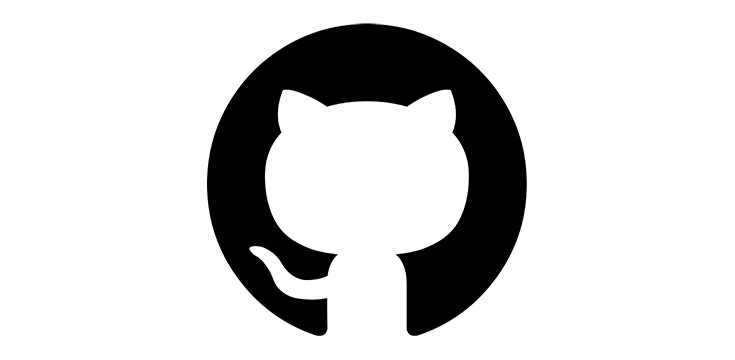In the world with the growing number of information, data protection takes the central part nowadays. More and more companies develop their source code and keep that vital information in GitHub. But can those users have absolute assurance that their data is safe and sound?
Let’s consider some facts.
Is GitHub safe?
Outages and ransomware attacks happen, and it’s not a secret. If we look at 2022, we can name some mentions when GitHub and ransomware were written in one title. The first one happened in August, when a GitHub developer announced about the massive widespread malware which attacked GitHub and permitted bad actors to clone and infect the repositories. The company was able to delete all traces of the “tricky” code that was built to steal vital data, like credentials, environment variables, passwords, and more.
Another, more recent event happened in October when bad actors gained access to one of Dropbox’s GitHub organizations and stole 130 of its repositories.
However, ransomware isn’t the only threat an enterprise can face. There can be outages and human errors - probably one of the most widespread reasons for data loss. So, how to enhance data accessibility and security in this world full of threats? What are the most important security measures the company should implement for its business continuity?
Authentication with SAML SSO
If you manage users' applications and identities centrally with some identity provider (IdP), you are able to configure Security Assertion Markup Language (SAML) single sign-on (SSO) in GitHub to protect your organization's resources, like repositories and metadata.
SAML single sign-on (SSO) helps organizations and business owners control and protect access to assets. Business owners can invite personal accounts on GitHub to join their organization that uses SAML SSO. This allows users to contribute to the organization as well as retain identity and contributions on GitHub. GitHub officially supports such IdPs as Active Directory Federation Services, Azure AD, Okta, OneLogin, and more.
Two-Factor Authentication and its value
To improve the security of credentials using Two-Factor Authentication is a must. This security layer eliminates unauthorized access to the account via an additional piece of information the user will need to provide to prove his identity.
How does it work? For example, a user provides a password to get to his GitHub account, at the same time a message or a call is sent to his telephone to prove his identity. In this case, there are two players during the authorization process - laptop and telephone.
Sometimes, enterprises need to implement even more security measures to provide authentication. In this case, more pieces of information take part in this process. Such a feature is called Multi-Factor Authentication. The work mechanism is the same as 2FA but includes more layers to be used.
Which access to grant to employees
It is a widely known fact that “Happiness loves silence.” Well, data security loves silence, too. It means that the fewer people who have access to critical data the better. Every Security Leader should remember that mistakes, intentional or unintentional happen due to the human factor. Thus, it is important to understand which access and privileges need to be granted to employees. It can become a key in GitHub data safety.
Backup as ransomware protection and Disaster Recovery guarantee
The most reliable layer of protection can become GitHub backup. Why? Because it guarantees data accessibility and business continuity of the company. In case of the most severe outage or ransomware attack, the company can restore a backup copy to permit its DevOps team to keep coding.
To understand how backup can enhance GitHub data security, it’s worth mentioning the key features every GitHub backup should include.
Data to protect
Every conscious leader should understand that repositories are not the only data that needs protection. To have an effective backup the GitHub environment has to be protected, including all the metadata such as issues, deployment keys, Wikis, pull requests, tags, and much more.
Ransomware resistance
Another aspect that backup software can decide is the ability to eliminate the negative aspects of a ransomware attack. Thus it should provide users with such features like: immutable, WORM-compliant storage that permits them to keep copies in unexecutable form. It permits the copy to be written once, though, read many times. Also, this ransomware protection should have a Secure Password Manager and high level of encryption at-rest and in flight which can help to secure the backup process itself. In this case even if the bad actor gets the data, it won’t be able to read it. And moreover - instant data recovery from any-point-in-time that will let you get to the previous state of data anytime you need.
The 3-2-1 backup standard
This model has already become the world-adopted excellence strategy for data backup. It works simply but provides great data protection. According to this rule, an enterprise should have at least 3 backup copies on two different storage instances, one of which should be offsite. In this situation even if there are some troubles with one backup destination or copy, the company has another one to run instantly for its continuous workflow. Thus, if the backup provider permits to assign multiple storages, cloud, local, or both at the same time, it can definitely improve the company's GitHub environment resistance.
Instant restore and Disaster Recovery
Another aspect that enlarges the enterprise’s chances to withstand any problem and boost GitHub safety is recovery. To answer instantly to any event of failure, the company should have different recovery opportunities. For example, it can recover the data using point-in-time or granular restore. If the GitHub service is down, it is nice to have a cross-over recovery. Some backup providers, like GitProtect.io, permit to restore GitHub repositories to GitLab or Bitbucket, if there is a necessity.
Moreover, it is nice to have step-by-step guidance on how to behave when the organization or backup software’s infrastructure is down. For example, if the company’s GitHub infrastructure is down, the security team can use the mentioned 3-2-1 rule to restore the data, as it permits to have a number of copies in different locations. In case of backup software downtime, it should provide its user with a special installer that the enterprise can use for logging in and recovering its GitHub data.
Conclusion
GitHub safety can only be reached with multiple actions. And here should be built a comprehensive strategy that will permit it to withstand any GitHub outage. This strategy shouldn’t only include the protection of the authentication credentials, but also the protection of the entire GitHub ecosystem, as well. And the main feature that can help to protect the data is backup as it should be present at any stage of the development process. Backup is the only feature that can help to get to the desired moment instantly not only in case of an event of failure but also in case of human errors and some daily situations.


